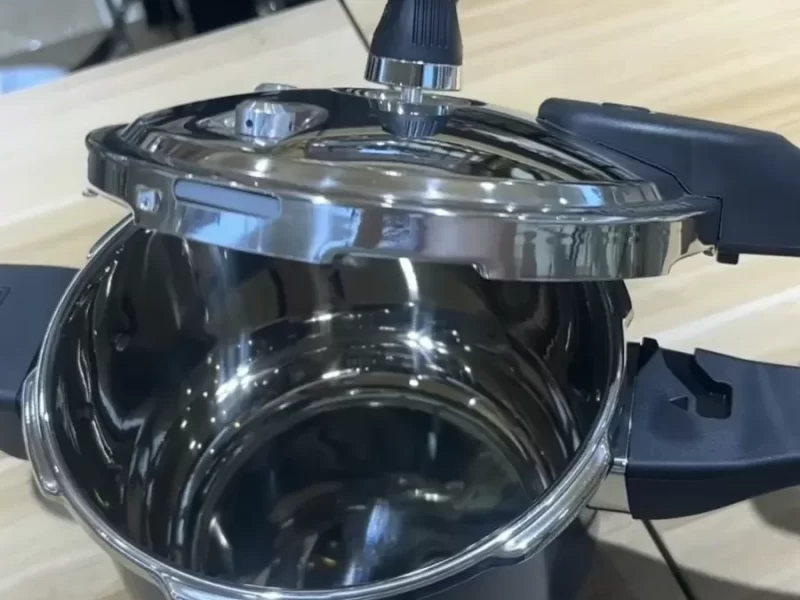
As a foreign trade manufacturer, we provide a complete analysis of the materials and technology in our stainless steel pressure cookers, emphasising quality, compliance, and B2B procurement clarity.
Core Material Specifications and Compliance Standards
Pressure Cooker Material Composition Analysis
We commit to utilising only food-grade stainless steel across all food-contact surfaces, meeting stringent international procurement and safety standards.
| Component Name | Main Material | Other Key Metals | Primary Function/Benefit |
| Pot Body Main | 304 Stainless Steel | None | Ensures food contact safety and strong corrosion resistance |
| Composite Bottom | 304 SS + Aluminum + 430 SS | Aluminum, Iron | Ensures even and rapid heat conduction and induction compatibility 66 |
| Lid | 304 Stainless Steel | None | Provides structural strength |
| Handle & Accessories | 304 SS + PP Plastic/Silicone | None | Guarantees heat insulation and sealing safety |
Stainless Steel Grade Comparison for Procurement Decisions
304 Stainless Steel (18-8):
- Composition: 18% Chromium, 8% Nickel.
- Standard: The recognized food-grade standard, suitable for all pot parts directly contacting food.
430 Stainless Steel (18-0):
- Composition: 18% Chromium, No Nickel.
- Function: Magnetic, used in the composite bottom for induction compatibility.
316 Stainless Steel (18-10):
- Composition: 18% Chromium, 10% Nickel, 2% Molybdenum.
- High-End Option: Considered medical grade with the highest corrosion resistance, available for premium customization.
Quality Assurance and Performance Guarantee
Mitigating Corrosion Risk
High-quality stainless steel is not absolutely rust-proof but is highly resistant under normal use and maintenance. Our quality control minimizes common corrosion risks:
- Manufacturer Solutions: Utilizing grade 304 or higher stainless steel combined with advanced surface treatments (e.g., Nano coating, Mirror polishing).
- Common Causes (For End-User Education): Chloride ion corrosion from salt/water; exposure to acidic substances like vinegar or lemon; physical damage to the surface oxide layer.
B2B Verification and Authentication
We provide transparency and support for buyer quality assurance:
Certification Verification: We supply Quality Inspection Reports and Food Grade Certification to verify compliance.
Material Identification Methods:
- Mark Identification: Look for SUS304 or 18/8 steel seals.
- Magnet Test: 304 stainless steel should be weakly magnetic; 430 stainless steel (in the base) will be strongly magnetic.
Safety of Composite Base Components
The aluminum layer in the composite bottom is completely sealed between stainless steel layers, ensuring it does not contact food and does not affect health.
B2B Partnership and Supply Chain Advantage
OEM/ODM Customization Services
We offer flexible production tailored to your brand and market needs:
- Material Upgrades: Option to upgrade to 316 medical grade stainless steel.
- Structural Customization: Adjustments to the composite structure (e.g., five-layer composite bottom) and anti-rust coating technology (e.g., Ceramic coating).
- Brand Compliance: Support for customized marking, packaging, and specific regional compliance requirements.
Recommended Procurement Suggestions
| Basic Requirements | Advanced Options |
| Pot body must be 304 stainless steel | Pot body should utilize 316 medical grade stainless steel 35 |
| Must feature a composite bottom design | Demand a multi-layer composite structure |
| Require valid Food Grade Certification | Look for advanced Anti-rust coating technology |
Conclusion
The material selection of stainless steel pressure cookers directly affects service life and consumer safety. For secure B2B sourcing, partner with a manufacturer that provides quality materials and clear compliance standards.
